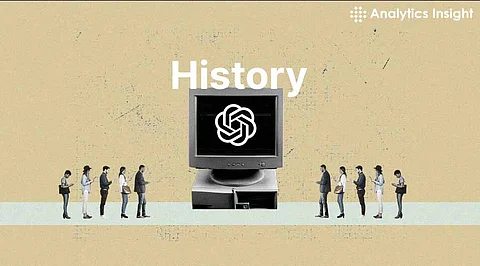

Since its launch, ChatGPT has create a buzz in the AI industry and has been the center of many conversations. However, it is a result of years of machine learning and natural language processing (NLP) growth. Before we dive into the details of what makes ChatGPT so valuable, we should look at the background of this innovative technology.
The origins of ChatGPT stem from a more general family of technologies known as artificial intelligence (AI), which was conceived in the 1950s. AI was first conceived as the idea of making machines think and respond like human beings. John McCarthy first used the term ‘Artificial Intelligence’ in 1956 at the Dartmouth Conference, which was an important conference that led to the later development of AI.
From the late 1960s through the early 1980s, there were major developments in rule-based systems and expert systems within the field of AI. These programs could perform problem-solving and decision-making in a specific area. However, natural language processing that allows the computer to work with human language was still beyond reach.
ChatGPT, an advanced feature of NLP, has been developed since the 1980s. The first generation of NLP systems was based on the rule-based approach and was quite rigid. It could not comprehend natural language as used in communication. It wasn’t until the late 1990s and early 2000s, when machine learning was introduced that things started to improve.
Deep learning was introduced in NLP in the early 2010s, mainly because of the advanced computational power and large data sets. This led to models that could ‘learn’ from data with the help of which rules were not programmed into the model. These propelled the creation of even more advanced language models, such as the GPT.
ChatGPT had a precursor in the form of the Transformer model, which was introduced by researchers at Google in late 2017. The clash of learning and the innovative idea in this model was that computers do not have to process the language in that particular way, hence revolutionizing NLP. Computers can take the whole setting of a specific sentence rather than analyzing every word and thus can understand language better and more accurately.
For this reason, OpenAI released the first generation of GPT (Generative Pretrained Transformer) in 2018. GPT-1 was a training model developed based on a massive text set, so providing simple instructions and receiving a string of paragraphs in response is possible. It showed that large-scale pre-training can be helpful for various natural language tasks.
Later in 2019, OpenAI developed GPT-2 with 1.5 billion parameters, the math internal structures through which the model computes the result. GPT-2 was able to produce even more elaborate and contextually suitable text, but the freedom it offered later led to its release over criticism of its plausible human-like language-generating capability.
In 2020, OpenAI launched GPT-3, the largest and most powerful language model to date, with 175 billion parameters. GPT-3 could generate highly sophisticated text, handle various tasks from coding to creative writing, and engage in more natural conversations. This model eventually paved the way for ChatGPT, a fine-tuned variant designed specifically for interactive dialogues.
ChatGPT immediately garnered attention for its ability to answer questions, carry on conversations, and even help with tasks like writing or brainstorming ideas. Unlike earlier AI chatbots, which often delivered clunky or irrelevant responses, ChatGPT felt more intuitive and lifelike.
From its early roots in AI to the transformative GPT models, ChatGPT stands as a remarkable technological achievement. Its history is one of rapid progress in natural language processing, powered by a shift toward more powerful machine learning techniques. As we continue to refine and develop this technology, it’s clear that ChatGPT is just the beginning of what’s possible in the world of AI-assisted communication.
